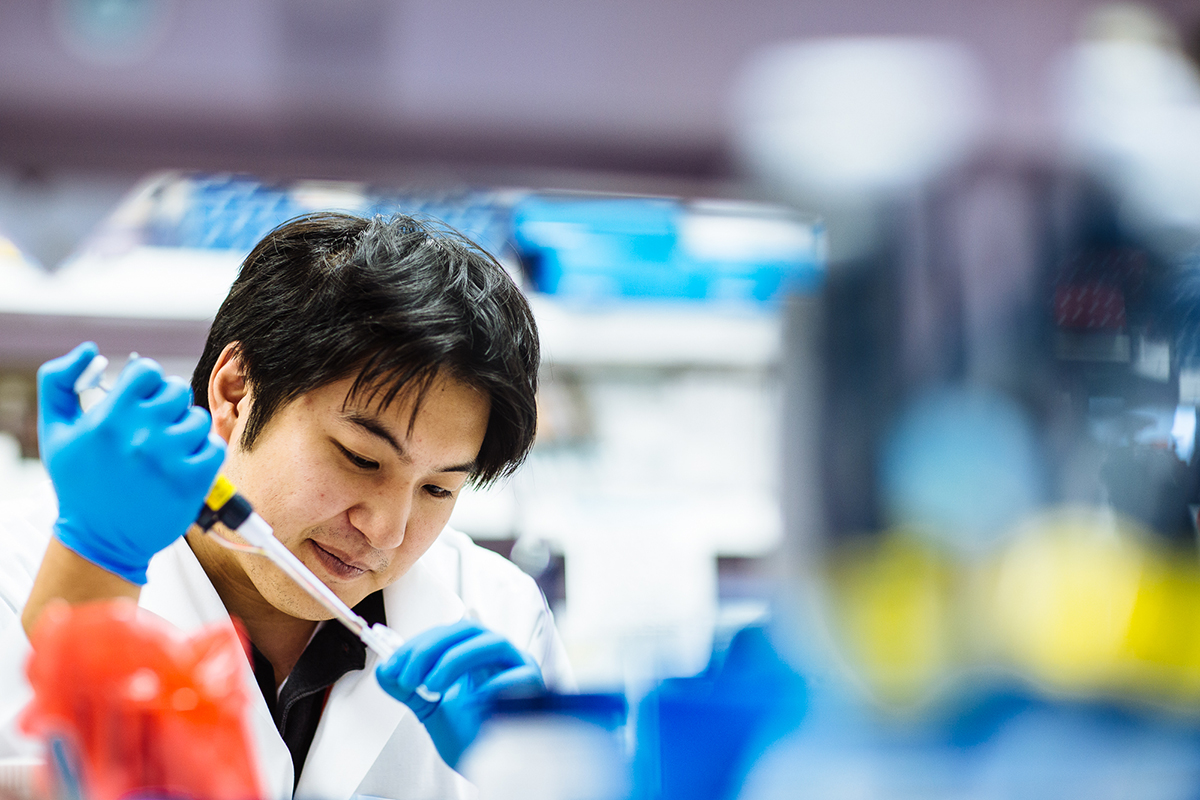Treatment
Pediatric Allogeneic Blood and Marrow Transplantation
The Division of Blood and Marrow Transplantation (BMT) at Children’s National Hospital is a leader in providing allogeneic blood and marrow transplantations for children with a variety of disorders. The first allogeneic BMT was performed at Children’s National in 1988. Since then, the BMT transplantation team has performed nearly 500 allogeneic blood and marrow transplantations. Children’s National patients have access to cutting-edge treatments through several clinical trials for allogeneic blood and marrow transplantation.
In addition, the Patient and Family Support Program provides comprehensive mental and psychosocial services and helpful resources for all patients treated in Children’s National's Cancer and Blood Disorders Center, as well as patients’ parents and siblings.
Although Children’s National oncologists refer many patients for allogeneic transplant, the Children’s National transplant team also works with subspecialists at other hospitals in the region and across the country to provide the transplant-related portion of a patient's treatment. Once that part of the treatment is complete, patients return to the care of their subspecialist for either further treatment or follow-up. The transplant doctors at Children’s National remain available to treat, or help the subspecialist treat, any transplant-related complications.
Frequently Asked Questions
About Allogeneic Transplantation
What is allogeneic transplantation?
What are the conditions treated with allogeneic transplantation?
Pediatric cancers treated with allogeneic transplantation
Hematologic diseases and hemoglobinopathies treated with allogeneic transplantation
Primary immune deficiencies in children treated with allogeneic transplantations
Treatment
Identifying a bone marrow/blood stem cell donor for a child
Stem cell collection
Preparing for transplantation for a child
Transplanting stem cells for a child
Engraftment for a child
Complications or risks of transplantation in children
- Hematopoietic Stem Cells: Cells with the ability to make other stem cells (self-renew) and divide and differentiate into mature white blood cells, red blood cells and platelets
- Cord Blood: The blood of newborns found in the umbilical cord and placenta. It contains large numbers of blood stem cells important for transplantation. For this reason, stem cells from the placenta and umbilical cord are collected after birth, then frozen and stored
- Remission: The disappearance of cancer cells following treatment. Also, the period during which the reduction or disappearance of symptoms occurs
- Relapse: The recurrence of leukemia or other underlying disease after treatment
- Virus: A type of germ that causes infections, most of which are not effectively treated with antibiotics. Examples: cytomegalovirus (CMV), herpes, varicella (chickenpox), adenovirus, hepatitis
- Rejection: The body’s refusal to accept the transplanted marrow
- Veno-Occlusive Disease: A rare condition which may occur in the first few weeks after a hematopoietic stem cell transplant (HSCT); caused by obstruction in the liver veins due to damage from chemotherapy and radiation
- Red Blood Cell: A type of blood cell made in the bone marrow that carries oxygen to all parts of the body
- Platelet: A component of the blood important in clotting. Inadequate amounts of platelets will lead to bleeding and bruising easily
Meet the Allogeneic Blood and Marrow Transplantation Providers
Departments that Offer Allogeneic Blood and Marrow Transplantation

Blood and Marrow Transplantation
Our program is one of the only dedicated pediatric bone marrow transplant programs in the region. We offer advanced treatments for children with leukemia and blood disorders like sickle cell disease. Learn more about this program.

Help Kids and Make a Difference
Invest in future cures for some of life's most devastating diseases. Give today to help more children grow up stronger.









